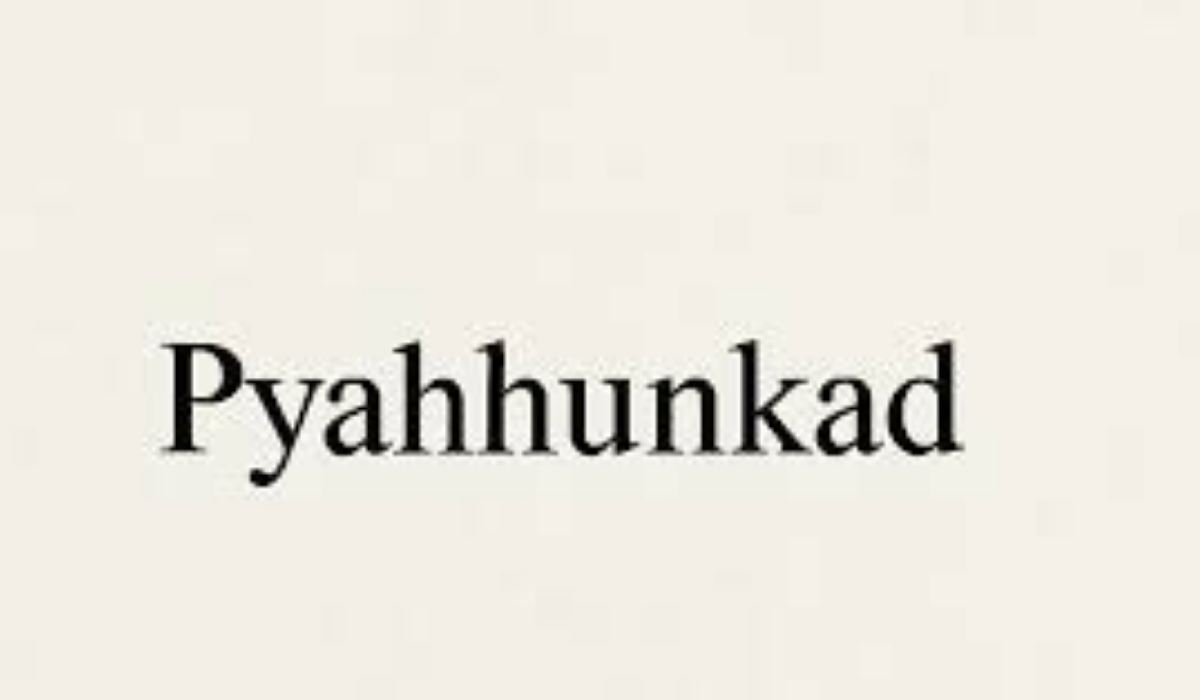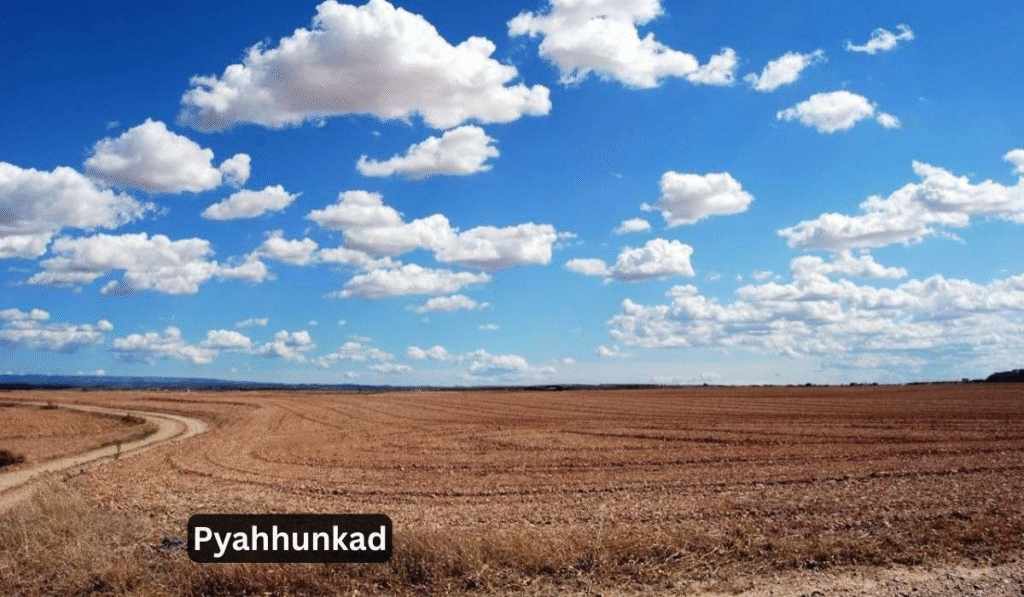Business
Pyahhunkad: History, Benefits, and Modern Relevance

Across civilizations, cultural concepts emerge that are more than mere practices; they become markers of identity, continuity, and wisdom. Among such concepts lies Pyahhunkad, a term that carries with it layers of history, cultural resonance, and modern-day significance. For centuries, has stood as both a symbolic and practical element within communities, offering not only heritage but also a framework for balance and meaning in daily life. In a world where traditions often fade under the weight of modernization, revisiting reminds us that the past continues to shape the present, and that old wisdom can still bring immense value to modern realities.
The Historical Background of Pyahhunkad
Understanding Pyahhunkad requires traveling back to its earliest manifestations within cultural history. It did not originate in isolation but within societies that valued ritual, shared knowledge, and community solidarity. was often central to ceremonies, whether spiritual or social, symbolizing unity and continuity. It provided a way for individuals to align themselves with the rhythm of nature and the responsibilities of the community. Over time, evolved from being a ritualistic component into a cultural philosophy, guiding generations in their worldview and daily choices. By preserving it, communities ensured that their identity remained strong even in periods of transformation.
Symbolic Meanings Within Pyahhunkad

Traditions endure not only because they are practiced but because they hold profound meaning, and Pyahhunkad is no exception. Embedded within it are values that shaped how individuals understood themselves in relation to others and the natural world. At its core, represents a search for harmony—between the material and the spiritual, between individuals and their communities, and between the past and the future. In some interpretations, it even symbolized resilience, reminding communities that survival depended not just on strength but also on cooperation and shared responsibility. These symbolic meanings gave an enduring appeal across generations.
The Role of Pyahhunkad in Cultural Identity
One of the most important contributions of Pyahhunkad has been its ability to preserve cultural identity. In times of migration, colonization, or external pressures, practices like served as anchors that reminded communities of who they were. It reinforced belonging and provided a narrative that could be shared across generations. Cultural identity is never static, but ensured that changes did not erase the foundation of heritage. Today, when globalization creates both opportunities and challenges, the role of in safeguarding identity remains as vital as ever.
Practical Benefits of Pyahhunkad

Though deeply symbolic, Pyahhunkad also carried practical benefits that extended into daily life. It fostered unity by encouraging collective participation, and it nurtured resilience by embedding shared responsibility within the community. also offered psychological benefits, providing comfort through ritual and meaning through tradition. For individuals, it often created a sense of purpose and belonging, which in turn contributed to mental well-being. Communities that embraced found themselves strengthened not only culturally but also socially, as it reinforced trust, collaboration, and cohesion among members.
Pyahhunkad in the Modern Context
In contemporary society, traditions face the risk of being overshadowed by technology, globalization, and changing lifestyles. Yet Pyahhunkad continues to prove its relevance. Modern interpretations of have emerged, adapting its principles to new contexts while retaining its core values. For instance, its emphasis on balance resonates with current discussions on sustainability and wellness. Its focus on community mirrors the growing realization that individual success is often tied to collective well-being. By reinterpreting for today, societies demonstrate that traditions do not have to be discarded; they can evolve and remain meaningful.
The Global Appeal of Pyahhunkad

Although Pyahhunkad is rooted in specific cultural settings, its messages have a universal appeal. Concepts of balance, resilience, and unity are not limited by geography or time. This is why can inspire individuals across different backgrounds who seek meaningful connections in their lives. The growing interest in cultural preservation, mindfulness, and holistic living provides fertile ground for to reach a wider audience. By understanding it, people across the globe can draw lessons that enhance their personal and collective experiences.
Challenges to Preserving Pyahhunkad
While Pyahhunkad remains relevant, it faces significant challenges in preservation. Modernization often creates a gap between younger generations and older traditions, and is not immune to this. Urbanization, migration, and the dominance of global culture can overshadow the practice, leaving it vulnerable to neglect. However, conscious efforts to document, teach, and adapt can counter these challenges. Communities must ensure that is not simply treated as a relic of the past but as a living tradition that still has much to offer.
Reviving Pyahhunkad for Future Generations

The survival of Pyahhunkad depends on how it is passed on to future generations. Education plays a central role here, ensuring that young people understand not only the practices but also the meanings behind them. Community initiatives, cultural festivals, and scholarly work can all contribute to reviving in a form that speaks to contemporary audiences. Importantly, reviving does not mean preserving it unchanged; it means adapting its timeless wisdom to modern realities so that it remains a source of strength, identity, and guidance.
Conclusion
Pyahhunkad is more than just a cultural practice; it is a philosophy that has carried communities through history and continues to offer meaning today. By examining its history, symbolism, and benefits, we see that is not simply a tradition of the past but a resource for the present and future. Its ability to adapt, inspire, and guide ensures that remains relevant even in a rapidly changing world. Whether viewed as a source of cultural identity, a tool for personal growth, or a philosophy of balance, Pyahhunkad continues to speak across time, offering lessons that humanity still needs.
Frequently Asked Questions
1. What is Pyahhunkad?
- Pyahhunkad is a cultural concept rooted in history, symbolizing community, continuity, and balance while offering both symbolic and practical benefits.
2. Why is Pyahhunkad important today?
- It remains important because it preserves cultural identity, promotes unity, and adapts well to modern discussions on wellness and sustainability.
3. How can Pyahhunkad benefit individuals?
- It provides individuals with a sense of purpose, belonging, and psychological well-being through its traditions and meanings.
4. What challenges does Pyahhunkad face?
- Pyahhunkad faces challenges from modernization, globalization, and generational gaps that can weaken its practice and relevance.
5. How can Pyahhunkad be preserved for the future?
- It can be preserved by teaching younger generations, adapting practices to modern contexts, and fostering community participation in its continuation.

-

 Celebrity7 months ago
Celebrity7 months agoThe Private World of Marina Pearl LeBlanc, Matt LeBlanc’s Only Child
-

 Life Style11 months ago
Life Style11 months agoWho is Amra Nor Jenkins? The Untold Story About Jeezy’s Daughter
-

 Entertainment12 months ago
Entertainment12 months agoWhat is Shoujo Ramune? The Comprehensive Guide
-

 Celebrity1 year ago
Celebrity1 year agoThe Untold Truth of William Mapel: A Deep Dive into His Personal Life
-

 News1 year ago
News1 year agoRanch World Ads Review: Everything You Need to Know
-

 Celebrity1 year ago
Celebrity1 year agoThe Untold Story of Denika Kisty: Her Family, Net Worth, and More
-

 Life Style12 months ago
Life Style12 months agoJill Wagner Accident: Life and Health After Accident
-

 Celebrity1 year ago
Celebrity1 year agoWho Is Stephanie Sarkisian? All You Need To Know AboutSteve Sarkisian’s Ex-Wife











